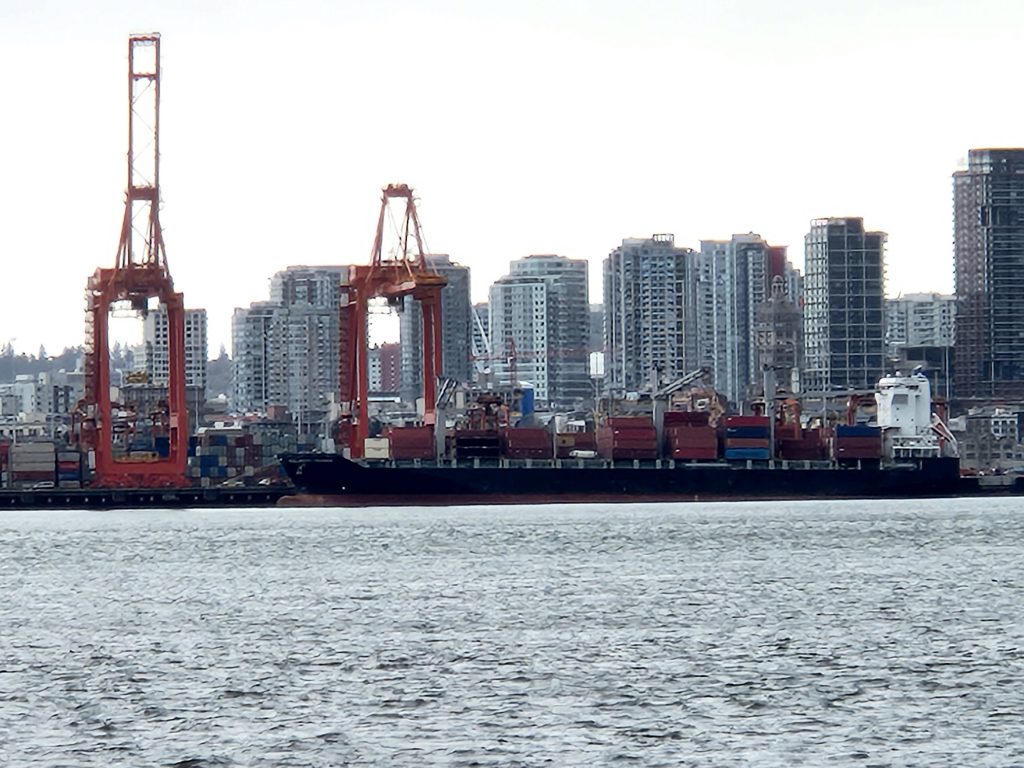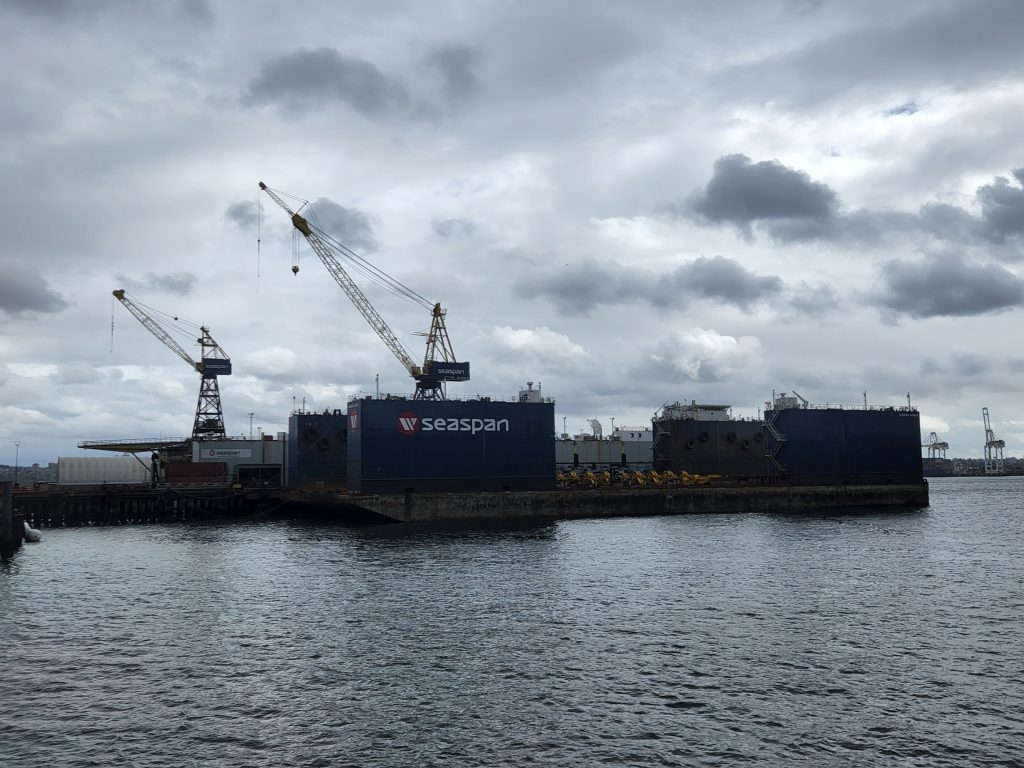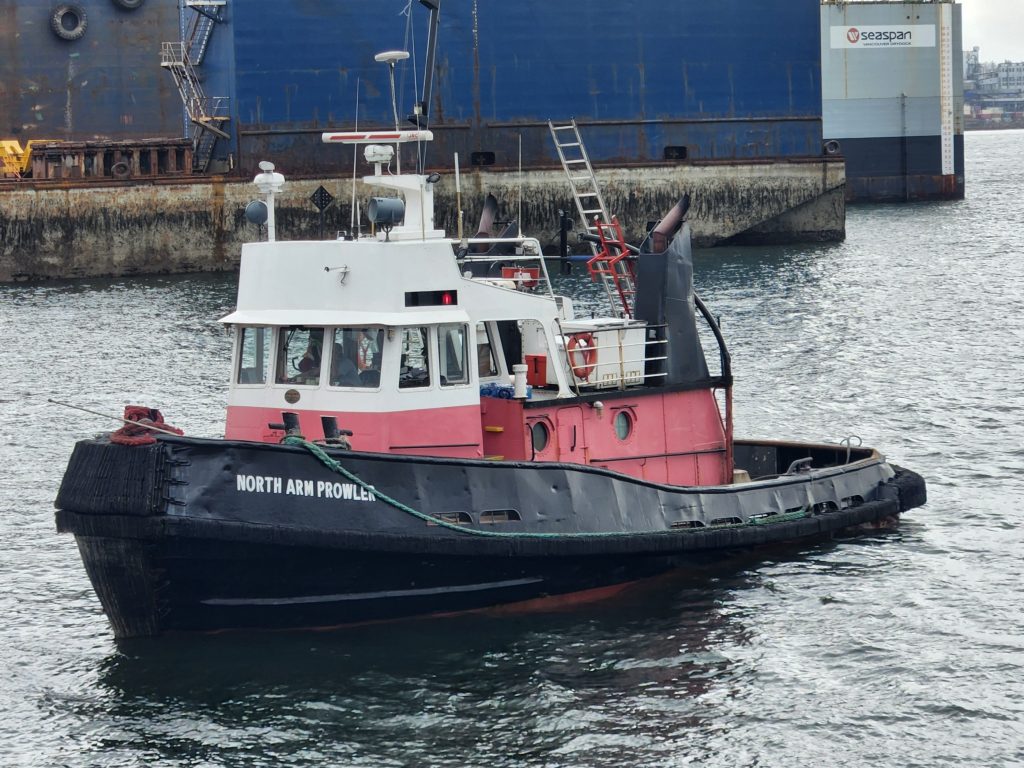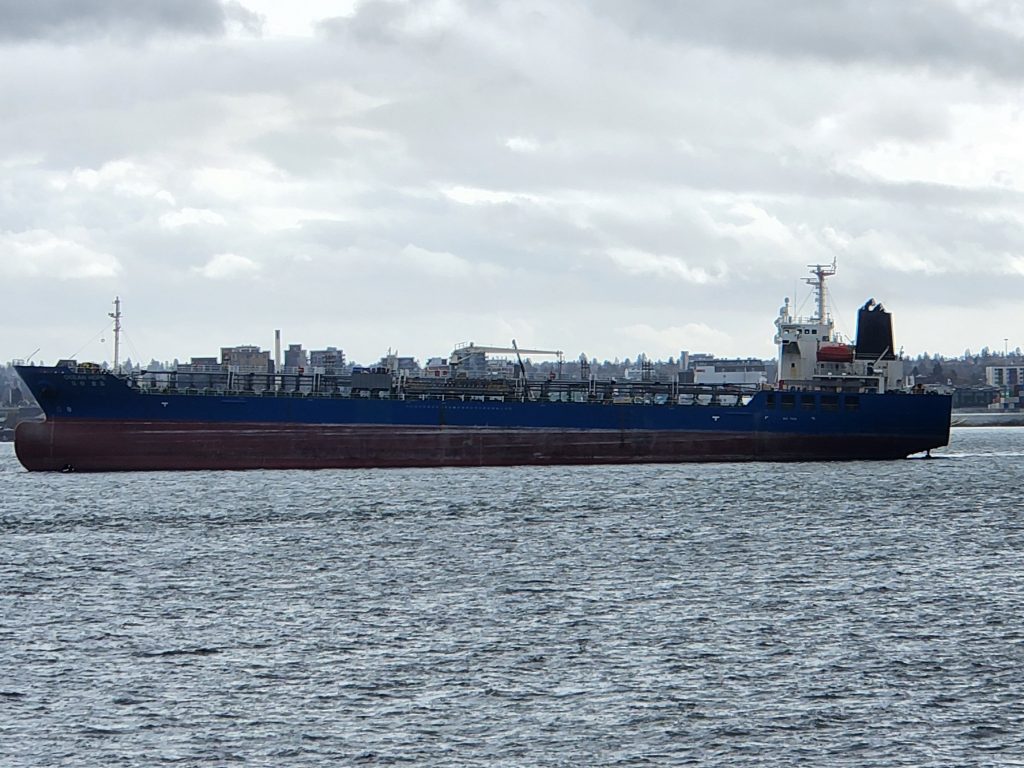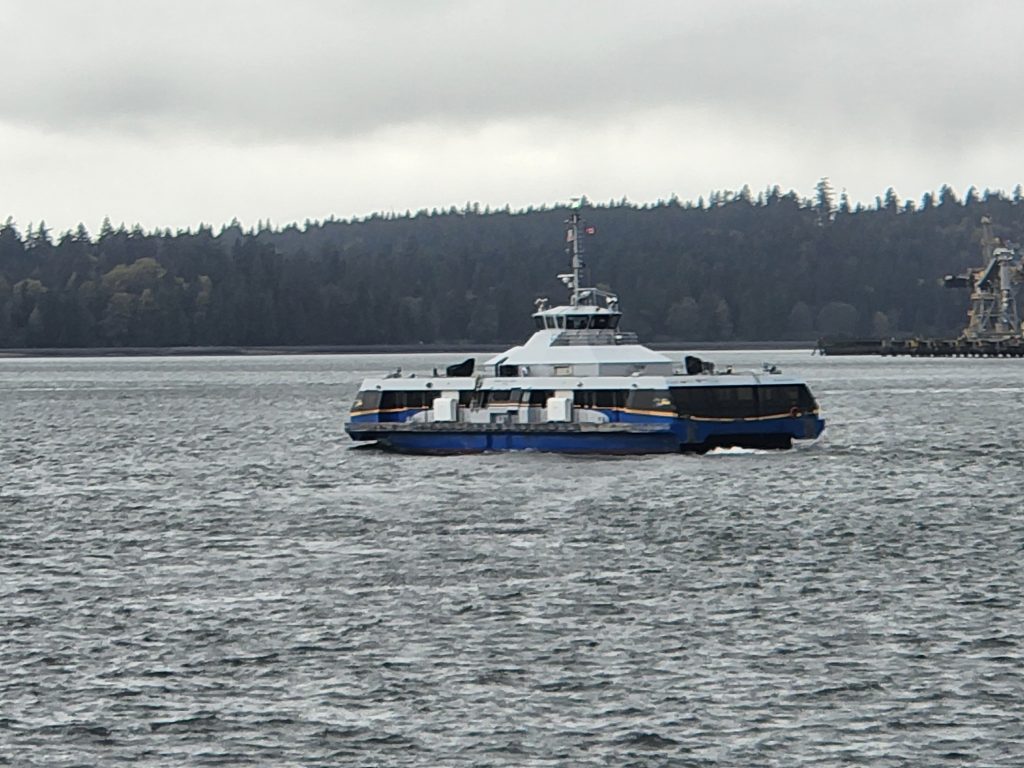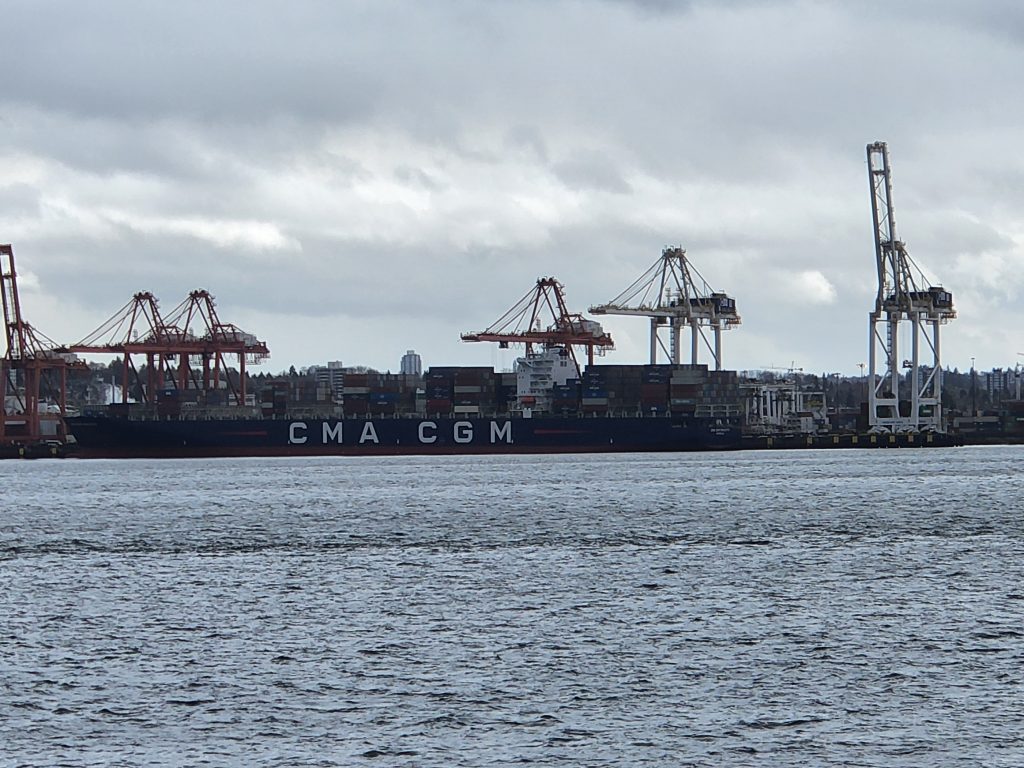
Harris Cook
After graduating High School, Harris Cook attended Capilano University, initially joining the global stewardship program before moving into the interdisciplinary studies program with a general focus in History and Geography. Harris cook is a Reserve Force Military Engineer who has completed his training and several additional courses as well as received the Queen’s Ventures award from Scouts Canada for his excellence during his time there. Going forward, Harris will graduate from Capilano University with a Bachelor of Arts in Interdisciplinary Studies, continue his military career and begin working for ALS Geochemistry.
In today’s society, the entire world is connected through an unending web of communication, travel, and trade that facilitates the quality of life we live as well as the growth and structure of society, with the crux of this being the Shipping Industry. The ability to transport large amounts of goods long distances has revolutionized society multiple times throughout history and offers us uncountable benefits. These include facilitating the many supply chains that keep the world running and having access to cheap goods worldwide. However, like most modern industries, this has come at severe environmental costs such as the emissions of large amounts of CO2 Sulphur Oxide and other harmful gasses, sound pollution, the spreading of invasives species, and other issues. As problems arise, so do solutions; with the introduction of new technologies and continuing to adhere to and improve upon regulations, we can drastically reduce these environmental impacts and move towards a cleaner world and healthier oceans.
Commerce by sea has existed for almost as long as boats have sailed the oceans and rivers. The first significant trade route was established as far back as five thousand years ago between what is now India and Pakistan was formed (NAMPA, 2018). As history advanced, humanity grew, increasing efficiency and profitability and lending itself to the increasingly connected global industries of the modern-day. But like most industries, it has its fair share of social and environmental problems that have seriously festered over time. The Shipping industry produces approximately one thousand Megatons of CO2 a year, roughly three percent of all CO2 emissions across the globe. That might seem like a small percentage, but as many other sectors begin to decarbonize, this number will rise to seventeen percent of global emissions by 2050 if the emissions continue as they are. On top of CO2 emissions, there are also many other harmful gasses such as SOx or Sulphur Oxide, which can mix with gasses found in the atmosphere and become acid rain. All of this doesn’t even begin to discuss the countless other issues with marine sound pollution and other harmful products found in the vessels. Compounded these issues is the current state of international maritime law that makes enforcement and regulation of the maritime industries very difficult.
As it stands, Marine merchant vessels must register to a state to which they will become boldened to as they travel international waters (C, 2022). Additionally, ships have the ability to choose which state they are accountable to on a ship-to-ship basis, with most large companies registering under a single flag (Chanev, 2021). Naturally, a lot of consideration goes into which flag is chosen, and for many companies, the Bahamas is the go-to flag. The Bahamas has put a great deal of work into making itself the most appealing flag state through various policies. For example, allowing foreigners to hold direct ownership of Bahamian ships, complete exemption from income taxes, and highly competitive fees and access to nautical inspectors (Gouthro, 2012). Policies like these make it an ideal choice for a large company allowing them to conduct business at minimal cost to themselves with the caveat that any regulation on how they perform this business must come from international law. Suppose a country like the Bahamas were to begin enacting more efforts to fight climate change. In that case, they could easily drive away business as a different country may become cheaper to operate under by comparison. This means that international law is the only real way to regulate the industry, and to its credit, it has taken many steps to improve maritime industries operations. In 2020 the IMO or the International Maritime Organisation set the limit on Sulphur Oxide emissions in uncontrolled areas to 0.5% mass by mass and 0.1% in controlled areas meaning the amount of sulfur released in the burning of fuel could not be more than 0.5% of all emissions (Wankhede, 2021). This is a significant change from the previous level, at 3.5% mass by mass in uncontrolled areas and 0.1% in controlled ones (Wankhede, 2021). Institutions like the IMO act as governing bodies for the oceans and serve to regulate and enforce the industries through the ratified nations (Raunek, 2022). But as an International Organisation, any decision it makes has to be agreed upon by multiple countries making any new regulations or changes to existed ones slow to come to fruition. This pace is due to the many different nations and parties that have to negotiate and agree upon the changes before they can be implemented, that is, if they get to be discussed at all. However, there is still an effective way to make the Maritime world more environmentally friendly, and that is by introducing new technologies that are both environmentally friendly and economically viable. While this may seem too good to be true, there is a historical president for this exact type of change where economics can solve a problem rather than environmentalism in the whaling industry.
In the early 18’th century, Whaling was a hugely profitable business that captivated the public with its stories of men on great ships hunting the largest of the earth’s creatures. By 1846 whaling was the 5’th largest sector in the U.S. economy; whale oil was used in lanterns, lighthouses, and machinery, Baleen for umbrellas and other products, and Ambergris for perfumes (Thompson, 2012). Yet 50 years later, ninety percent of the whaling fleets had disappeared, and the industry was all but dead, giving the whales a much-needed reprieve from the hunts (Thompson, 2012). This was not done because of any significant push for environmentalism people of the time rarely considered that one day they would run out of whales. The incessant hunts had driven the whales close to extinction, which had driven up prices for whale oil, causing it to become more and more challenging for businesses using the product to make a profit (Thompson, 2012). However, the killing blow came in the form of Kerosene, a fuel oil that burned brighter and cleaner than whale oil as well as other fossil fuels like petroleum. Soon enough, there was little demand for whale oil; any lighthouse that still used it was now considered subpar. Any loyal company that insisted on remaining with whale oil was eventually forced to change as whale oil became more expensive while being an inferior product. Additionally, none of the other products generated enough demand for the existence of the massive whaling fleets (Thompson, 2012). The result was that whales were saved from extinction not by any push for environmentalism but by pure economics and profitably. In today’s world, this same method must be applied to protecting the environment, particularly in cases where regulation is next to impossible, given how difficult it is to change or enforce international maritime law. Fortunately for us, that is entirely within our grasp.
Just as Kerosene and other fossil fuels rendered whale oil obsolete, new technologies replace old ones in all parts of the large shipping vessels that make up most of the industries’ boats. For example, take the Ballast system. The Ballast is a is system of tanks that store large quantities of water used to balance out the ship and fully submerge the propeller when the vessel is unburdened (Dasgupta, 2019). The water taken into these tanks can often stay there for the entire duration of the vessel’s voyage before being dumped in a far-off port (Dasgupta, 2019). The problem arises when various small fish plants and other organisms become stowaways in these tanks after being taken in with the water and transported to wherever the ship is going resulting in them becoming an invasive species and damaging the local marine environments (Dasgupta, 2019). One prominent example is Asian Kelp, an edible species of seaweed found on the coasts of China, Korea, and Japan (U.S. National Park Service, 2017). After being discharged from the ballast pipes or clinging to the haul, The Kelp can quickly regrow itself on the bottom of docks or the seafloor. From there, it begins driving the local seaweeds out of their habitat, clogging up ports, damaging marine farms, and tangling up in fishing gear (U.S. National Park Service, 2017). This Kelp is so dangerous that it has earned the 97’th spot on the top 100 most damaging invasive species (Global Invasive Species Database, 2022). The solution comes in a new Ballast-free ship design that removes the need for ultraviolet irradiation chemical biocides and other costly filters that fight Asian Kelp and other stowaways (Dasgupta, 2019). The design achieves this by maintaining a constant water flow through an internal system from the front to the back rather than having stagnant storage tanks (Dasgupta, 2019). The now unnecessary filters and Ballast treatment technologies save 540 000$ each year while upholding regulations on Ballast treatment and reducing the spread of invasive species without sacrificing the quality of the vessel (Dasgupta, 2019).
Another problem caused by large boats is marine noise pollution. Sound travels far faster and over greater distances underwater, causing any sound made by large vessels to disproportionally affect the waters they travel through (Polidoro, 2021). Much like on land, the sound is a vital sensory stimulus, maybe more so underwater, for its ability to travel farther. Marine Life of many kinds relies on sound for feeding, navigation and communication, and even reproduction for some species (Polidoro, 2021). For animals like Whales, Atlantic Cod Dolphins, and many other creatures, the intense cacophony created by large vessels on the ocean can cause severe damage to these and many other sea creatures. Of all of the marine sound produced, 85% of it comes from the propellers, with studies finding that the noise often comes from inefficiencies in the design that caused an issue called Cavitation, where there would be improper water flow over the blades of the propeller and the rudder (Polidoro, 2021). Fortunately, Cavitation is an issue that can be fixed; newer, more efficient propellers can cut down Marine noise by six to eight decibels (Polidoro, 2021). On paper, this seems like it is not a significant change, but it’s important to remember that sound increases exponentially. A twenty-decibel sound is not twice as loud as a ten-decibel sound but ten times louder. A six to eight decibel change equates to about a 75% reduction in ocean sound. The energy saved by increasing the propeller’s efficiency also equates to approximately 4% fewer emissions through increased speed and fuel efficiency (Polidoro, 2021). 4% may seem like a small amount, but less fuel burned is money saved, and very few will complain about the ability to get to their destination faster.
Another significant problem with maritime travel is the emissions caused by the fossil fuels burned to keep the engines and the ship as a whole running smoothly. To effectively tackle this problem, many different solutions exist with the long-term goal of making zero-emission boats. While these may not be available yet, the first models could begin to see use within the next twenty to thirty years. The First-ever zero-emission ship, the E/S Orcelle, started its development in 2005 for the Expo Japan and got its name from a species of endangered east Asian dolphins (Laxmi, 2017). The vessel achieves its zero-emission status by running entirely on solar power, wind, wave energy generators, and fuel cells (Laxmi, 2017). Its unique haul design removed the need for a conventional propeller system and, by extension, a ballast system and large quantities of machine oil (Laxmi, 2017). This design utilizes clean energy through wind propelling the vessel through the sail and kite system, solar panels, and wave energy converters to generate the energy required to run the ship (Laxmi, 2017). Additionally, hydrogen can be extracted from water through a process called hydrolysis and then used in fuel cells as an emission-free fuel that provides most of the ship’s propulsion (Laxmi, 2017). Any excess electricity can be stored for situations when less power can be generated due to the weather conditions. Amazingly this design would only create two kinds of emissions, heat but not in any dangerously larges amounts, and water from the fuel cell reactions (Laxmi, 2017). If that wasn’t good enough, all the space saved from the systems rendered redundant by the new technologies can be refitted into extra cargo space affording a 50% increase in area compared with conventional cargo ships of the same scale. More cargo space means more money per trip, making it an ideal choice economically (Laxmi, 2017).
Ships like the E/S Orcelle and other similar designs could be the future of maritime travel and trade. However, these designs are still in their developmental stage and won’t see any use for a long time, so what can we do to reduce emissions with the technologies we currently have? While it may not be viable to phase out fossil fuels just yet, we can switch to healthy fuels such as LNG or Liquefied Natural Gas, and the Tri-Fuel Diesel Electric Propulsion Engines or TFDE that are designed to make the best use of the new fuels. Unlike standard engines, TFDE engines lack a central propulsion system, instead having two smaller electric motors for the primary propulsion system (KaranC, 2019). The smaller system saves space meaning more cargo and more options when locating machinery (Balasubramanian, 2021). Additionally, these motors are far lower maintenance when compared with their larger diesel counterparts and produce far less vibrations and sound (KaranC, 2019). The engines also offer a higher degree of control as they can run on lower RPM, allowing for more fine-tuned control (Balasubramanian, 2021). LNG fuel also has its host of benefits, both mechanical and environmental. The fuel is much cleaner than standard fuels producing the lowest amount of CO2 NOx, SOx out of any fuel source, and less waste sludge, cutting back on the need for emission filtration (Balasubramanian, 2021). LNG fuel is also far easier to store onboard the ship, allowing for easier refueling when at the port. If used in the auxiliary power engines, it can completely cut the need to rely on shore power, which is costly and not available everywhere (KaranC, 2019). To top it all off, LNG is a cheaper fuel source. This system is easy to incorporate as the initial investment of retrofitting a ship to integrate these systems is relatively low (Balasubramanian, 2021), making it another ideal choice for current ship owners.
Another area where maritime vessels can find savings is in waste heat. Engines burning fuel generate heat that is kept in check by cooling systems under normal circumstances, and the rest exits the ship through the gas exhaust. However, this heat can be put good better use through a waste heat recycling system. How it works is that some exhaust gasses are funneled into the system, which uses the heat to generate steam (Kaushik, 2021). The steam is then used by a plethora of the ship’s other systems, some including heating the cargo bays and crew accommodations as well as the fuel oil for ease of use (Kaushik, 2021). Those benefits directly equate to lower operating costs and decreased fuel consumption as the ship no longer burns fuel for those functions (Kaushik, 2021). The reduced fuel consumption amounts to approximately 14% less CO2 emissions released, making it another economic and environmental winner (Kaushik, 2021).
Increasing fuel efficiency directly equates to fewer emissions; after all, less fuel burned over a greater distance means less need for more fuel, and many smaller adjustments and technologies can affect fuel economy. One such addition is the correct use of haul paint. Haul paint adds corrosion resistance and color to the haul of a ship, but it can also increase fuel economy by reducing friction affording a 3-8% increase in fuel savings (Kaushik, 2021). Another small change is the use of speed nozzles in merchant ships. Speed Nozzles have been used for some time in tug boats and smaller crafts and aid in propulsion and propeller efficiency (Kaushik, 2021). Employing these in a special rudder arrangement can increase thrust by 30% at lower speeds allowing the vessels more speed and maneuverability while also reducing the sound created and the amount of energy for propulsion while moving within the speed range of the nozzle (Sip Marine, 2020). This technology is particularly useful for Fishing Tug boats and shipping routes that do not stray far from shore (Sip Marine, 2020). Another addition that can help with fuel economy is the optimization of the cooling systems. Engines generate a lot of heat, keeping the ship moving, but the heat is kept in check by a network of pipes, pumps, and coolers. By adequately optimizing this system, you can decrease fiction, allowing the water to flow more efficiently (Kaushik, 2021). This results in the system draining 20% less electricity and burning 1.5% less fuel while continuing to run at optimal levels (Kaushik, 2021).
Another critical system is waste management, particularly in the recycling of decommissioned ships. For a long time, there was very little in the way of regulation on the recycling of large vessels resulting in large graveyards of ships left unattended for years at a time (Mambra, 2022). There were even cases where ships were deliberately sunk in deep waters so the owners didn’t have to deal with the costs associated with recycling them (Mambra, 2022). Practices like these are terrible for the environment as there are hazardous materials such as Asbestos and PBCs that pose a danger to both marine and human life if not handled correctly (Mambra, 2022). In 2009 The IMO took direct action to tackle this issue at a convention held in Hong Kong (Mambra, 2022). The Convection dictated rules for the recycling of ships stating that all recycled ships should not pose any unnecessary risk to human health and the environment (Mambra, 2022). With this in mind, all vessels must eventually make their way to a shipbreaking yard, eventually and undergo the costly process of being recycled. While many materials such as steel, brass, silver, and aluminum can be reclaimed, and some machinery can be reused, it’s still a lengthy and costly process. However, it can be made easier through eco-friendly ship design. One method is through a technology called Sandwich Plate System or SPS, a process that involves steel plates being sandwiched together with a polyurethane elastomer core (Kaushik, 2021). This process avoids excessive use of steel and makes the material more resistant to corrosion, stopping it from absorbing chemicals like ordinary steel does and making the vessel lighter. The chemical resistance makes the material far easier to recycle as the steel doesn’t need to undergo as much treatment before being reused (Kaushik, 2021). Meanwhile, the reduced weight and corrosion resistance grant the material superior performance over the ship’s lifetime.
All of these innovations, each for different parts of a ship, serve wildly different jobs have one thing in common they work to make the ship more environmentally friendly and more economically viable, not either or. Even today, the world is seeing the consequences of its inaction in forms like more severe weather conditions and ever-shrinking glaciers, so the time to change has come. But when the change can come in the form of LNG fuel Sandwich Planting or Ballast Free Hauls that make the ships more environmentally and make money while doing it become ridiculous not to be environmentally friendly. Even the smaller technologies can have an impact. A for-profit company looks to get the most out of every investment they make, and these technologies save money. Companies can continue to make profits, and we can continue to benefit from the increased quality of life the ocean and the maritime industries afford us. The initial investment may come at a cost to the company, but it is a cost that can pay for itself over time through decreased operating costs. Just as the whales were saved by whale oil being rendered obsolete, the maritime industries can become environmentally sustainable by introducing and adopting new technologies. As technologies continue to advance, it will quickly become bad for businesses not to keep up with these innovations.
Works Cited
C, K. (2022, January 5). What are flag states in the shipping industry and what’s their role? Marine Insight. Retrieved April 4, 2022, from https://www.marineinsight.com/maritime-law/what-are-flag-states-in-the-shipping-industry-2/
Chanev, C. (2021, September 30). Cruise ship registry, flag state control, flag of convenience. CruiseMapper. Retrieved April 4, 2022, from https://www.cruisemapper.com/wiki/758-cruise-ship-registry-flags-of-convenience-flag-state-control
Polidoro, J. (2021, February 23). A few fixes could cut noise pollution that hurts Ocean Animals. Scientific American. Retrieved April 5, 2022, from https://www.scientificamerican.com/article/a-few-fixes-could-cut-noise-pollution-that-hurts-ocean-animals/
U.S. Department of the Interior. (2017, June 29). Invasive Kelp spreads into new territory (U.S. National Park Service). National Parks Service. Retrieved April 5, 2022, from https://www.nps.gov/articles/invasive-kelp-spreads-into-new-territory.htm
Global Invasive Species Database. (2022). 100 of the World’s Worst Invasive Alien Species. GISD. Retrieved April 5, 2022, from http://www.iucngisd.org/gisd/100_worst.php
Raunek, K. (2022, February 3). What is International Maritime Organization (IMO)? Marine Insight. Retrieved April 5, 2022, from https://www.marineinsight.com/maritime-law/what-is-international-maritime-organization-imo/
IMO 2020 – cutting sulphur oxide emissions. International Maritime Organization. (2020). Retrieved April 5, 2022, from https://www.imo.org/en/MediaCentre/HotTopics/Pages/Sulphur-2020.aspx#:~:text=Known%20as%20%E2%80%9CIMO%202020%E2%80%9D%2C,the%20previous%20limit%20of%203.5%25.
CruiseMapper. (2021, September 30). Cruise ship registry, flag state control, flag of convenience. CruiseMapper. Retrieved April 5, 2022, from https://www.cruisemapper.com/wiki/758-cruise-ship-registry-flags-of-convenience-flag-state-control
Mambra, S. (2022, January 20). What is Green Ship Recycling? Marine Insight. Retrieved April 5, 2022, from https://www.marineinsight.com/environment/what-is-green-ship-recycling/
Dasgupta, S. (2019, December 24). What are non ballast or ballast free ships? Marine Insight. Retrieved April 5, 2022, from https://www.marineinsight.com/environment/what-are-non-ballast-or-ballast-free-ships/
Thompson, D. (2012, February 22). The spectacular rise and fall of U.S. whaling: An innovation story. The Atlantic. Retrieved April 5, 2022, from https://www.theatlantic.com/business/archive/2012/02/the-spectacular-rise-and-fall-of-us-whaling-an-innovation-story/253355/
The history of the maritime industry – NAMEPA. North American Marine Environment protection Association. (2018, August). Retrieved April 5, 2022, from https://namepa.net/wp-content/uploads/2018/08/Lesson-3-The-History-of-the-Maritime-Industry.pdf
Gouthro, V. M. (2012, August 24). Advantages of registering a vessel under the Bahamian flag – transport – bahamas. Mondaq. Retrieved April 5, 2022, from https://www.mondaq.com/marine-shipping/193420/advantages-of-registering-a-vessel-under-the-bahamian-flag
Wankhede, A. (2021, October 18). What is sulphur oxides or sox air pollution from ships? Marine Insight. Retrieved April 5, 2022, from https://www.marineinsight.com/maritime-law/what-is-sulphur-oxides-or-sox-air-pollution-from-ships/
Laxmi. (2017, February 11). World’s first zero emission vessel- E/S Orcelle. Marine Insight. Retrieved April 5, 2022, from https://www.marineinsight.com/green-shipping/worlds-first-zero-emission-vessel-es-orcelle/
C, K. (2019, December 23). The TRI fuel marine engine concept for container ships. Marine Insight. Retrieved April 5, 2022, from https://www.marineinsight.com/green-shipping/the-tri-fuel-marine-engine-concept-for-container-ships/
Balasubramanian, S. (2021, March 10). Operational advantages of tri-fuel diesel electric propulsion (TFDE) over diesel engine propulsion. Marine Insight. Retrieved April 5, 2022, from https://www.marineinsight.com/main-engine/operational-advantages-of-tri-fuel-diesel-electric-propulsion-tfde-over-diesel-engine-propulsion/
Alfa Laval. (2022). Waste heat recovery. Alfa Laval – Alfa Laval in Canada. Retrieved April 5, 2022, from https://www.alfalaval.ca/industries/marine-and-transportation/marine/waste-heat-recovery/
SIP Marine. (2020, April 29). Nozzles. SIP Marine. Retrieved April 5, 2022, from https://www.sipmarine.nl/nozzles/?lang=en
Kaushik, M. (2021, September 16). 14 technologies to make the Ultimate Green Ship. Marine Insight. Retrieved April 5, 2022, from https://www.marineinsight.com/green-shipping/13-technologies-to-make-the-ultimate-green-ship/

